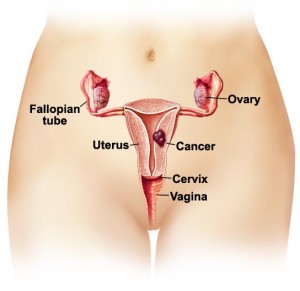| What is Uterine Cancer? |
The uterus is a part reproductive system for women. It is the place where a baby grows when a women pregnant. The lower part of the uterus is called the cervix. Cervix leads into the vagina. The most common type of uterine cancer occurs in the endometrial, the lining of the uterus. It also known as a endometrial cancer. Cancer that starts in the muscle layers of the uterus is called uterine sarcoma.
![]()
UTERINE CANCER NEURO ACUPUNCTURE
| What is the risk factor of vaginal cancer? |
A risk factor is anything that changes your chance of getting a disease such as cancer. Different cancers have different risk factors. Some common risk factors for uterine cancer include:
- Age
Most women diagnosed with uterine cancer are over age 50 and have gone through menopause.
- Number of menstrual cycle
Women who have more menstrual cycles in their lifetime have and increased uterine cancer risk. This includes starting periods before age 12 and going through menopause after age 50. Starting periods early is less a risk factor for women with early menopause.
- Estrogen replacement therapy
Estrogen is available in many different forms such as pills, skin patches, creams and shots. Estrogen treatment can reduce hot flashes, improve vaginal dryness, and help prevent the weakening of the bones that can occur with menopause. Using estrogen alone can lead to endometrial cancer in women who still have a uterus. Progesterone like drugs must be given along with estrogen to reduce the increased risk of uterine cancer. Replacing estrogen without progesterone after menopause may increase woman’s risk of developing uterine cancer.
- Obesity
Fat tissue tends to produce higher levels of estrogen. Woman’s estrogen is produced by her ovaries, but fat tissue can change some other hormones into estrogen. Having a more fat tissue can increase woman’s estrogen levels, which increases her endometrial cancer risk.
- Diabetes
Uterine cancer is more prevalent in women with diabetes. Diabetes is more common in people who are overweight, but even people with diabetes who are not overweight have a high risk of uterine cancer.
- Genetic Factors.
Uterine cancer tends to run in some families. Most cases are not due to genetic or heredity factors. However, in a small number of cases, a faulty gene (which can be inherited) may trigger the disease. This disorder is called heredity nonpolyposis colon cancer (HNPCC).
- Ultrasound scans.
Ultrasound scans of the uterus. An ultrasound scan is a safe and painless test which uses sound waves to create images of organ and structures inside your body. Usually, this type of diagnose used for pregnant women. The probe of the scanner may be placed on your abdomen to scan the womb. Sometimes, a small probe is also placed inside the vagina to scan the uterus from this angle.
- Endometrial Sampling.
Endometrial sampling occurs when a thin tube is passed into the uterus. Other than that, gentle suction are used and small samples of the uterine (endometrial) can often be obtained. The biopsy (sample) is looked at under the microscope to look for any abnormal cancer cells.
- Hysteroscopy
Hysteroscopy occurs when a thin telescope that is passed through the cervix into the uterus. The doctor can see the lining of the uterus and take biopsies (sample) of abnormal-looking areas.
 |
Search How to cure Uterine Cancer by Chinese Master Treatment in Google search here. |
